Solar panel ratings are crucial for understanding how solar panels perform and what they’re capable of. Whether you’re setting up a DIY system or a larger solar installation, these ratings help you choose the right panels and design your system effectively.
In this article, I’ll break down the standard ratings you’ll encounter on solar panels, explaining what each one means.
Let’s dive in.
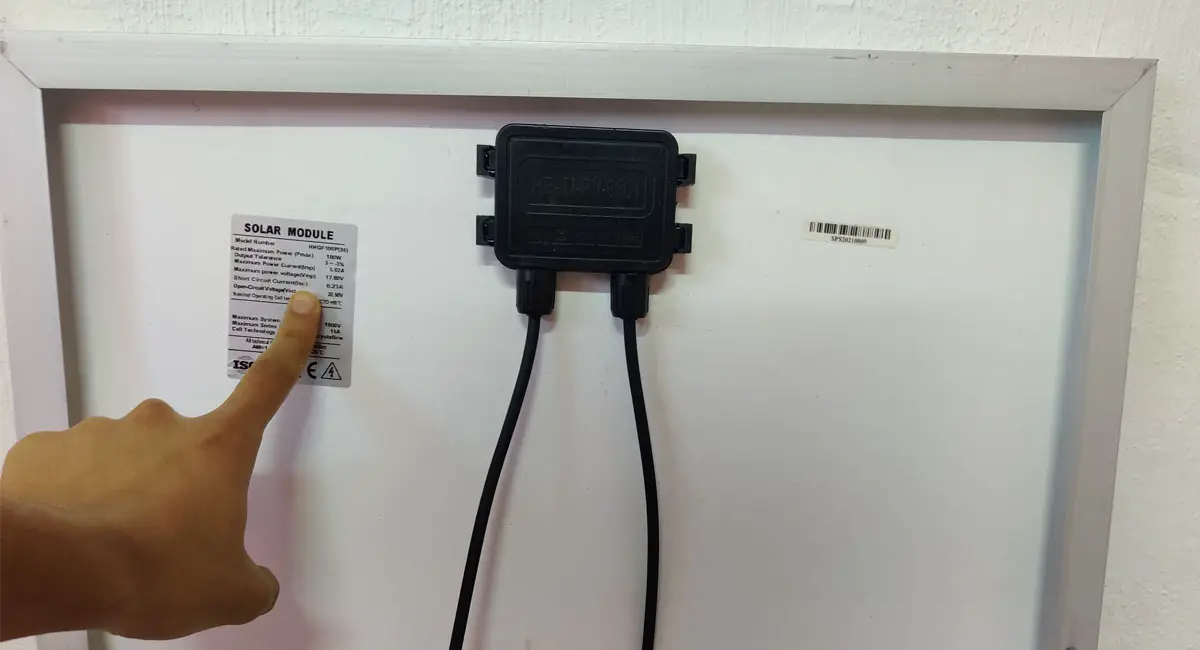
I get commissions for purchases made through links in this post.
How are solar panels rated?
Solar panels receive their ratings under specific testing conditions known as “Standard Testing Conditions” or “STCs”. These conditions serve as the industry standard for evaluating solar panels, making it easier to compare panels accurately.
STCs replicate ideal operating conditions, including:
- An “Air Mass” of 1.5
- A “Solar Irradiance” of 1000 Watts per square meter (W/m²)
- And a “Solar Cell Temperature” of 25°C.
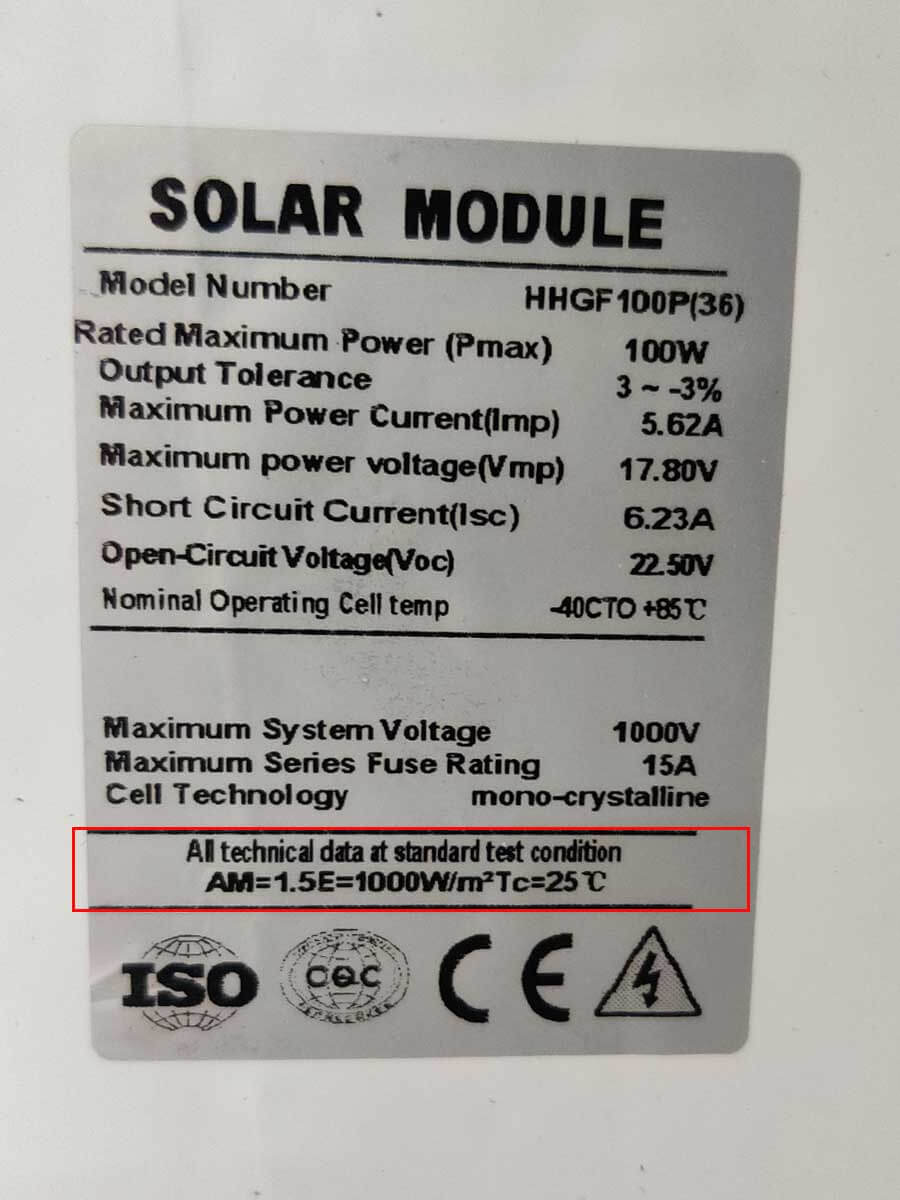
Manufacturers measure various aspects of a solar panel’s output under these STCs and provide this information as solar panel ratings.
You can typically find these ratings on the nameplate or specification sticker on the back of the solar panels. While the amount of information on the nameplate may vary between manufacturers, the most common electrical ratings you’ll find on a solar panel include:
- A Wattage Rating (Watts)
- Current Ratings (Amps)
- Voltage Ratings (Volts)
Manufacturers also specify additional safety ratings that detail the solar panels’ characteristics and operational limitations. These may include:
- An Operating Cell Temperature Range (°C)
- A Maximum System Voltage rating (Volts)
- A Maximum Series Fuse rating (Amps)
When choosing solar panels, it’s important to consider these ratings in the context of your specific project’s requirements and location. Different electrical ratings (Watt, Amps, and Volts) can necessitate different equipment, and certain panels may be better suited for particular applications and environmental conditions.
Now, let’s explore the meaning of each solar panel rating.
Solar panel ratings explained:
Solar panel Wattage Rating:
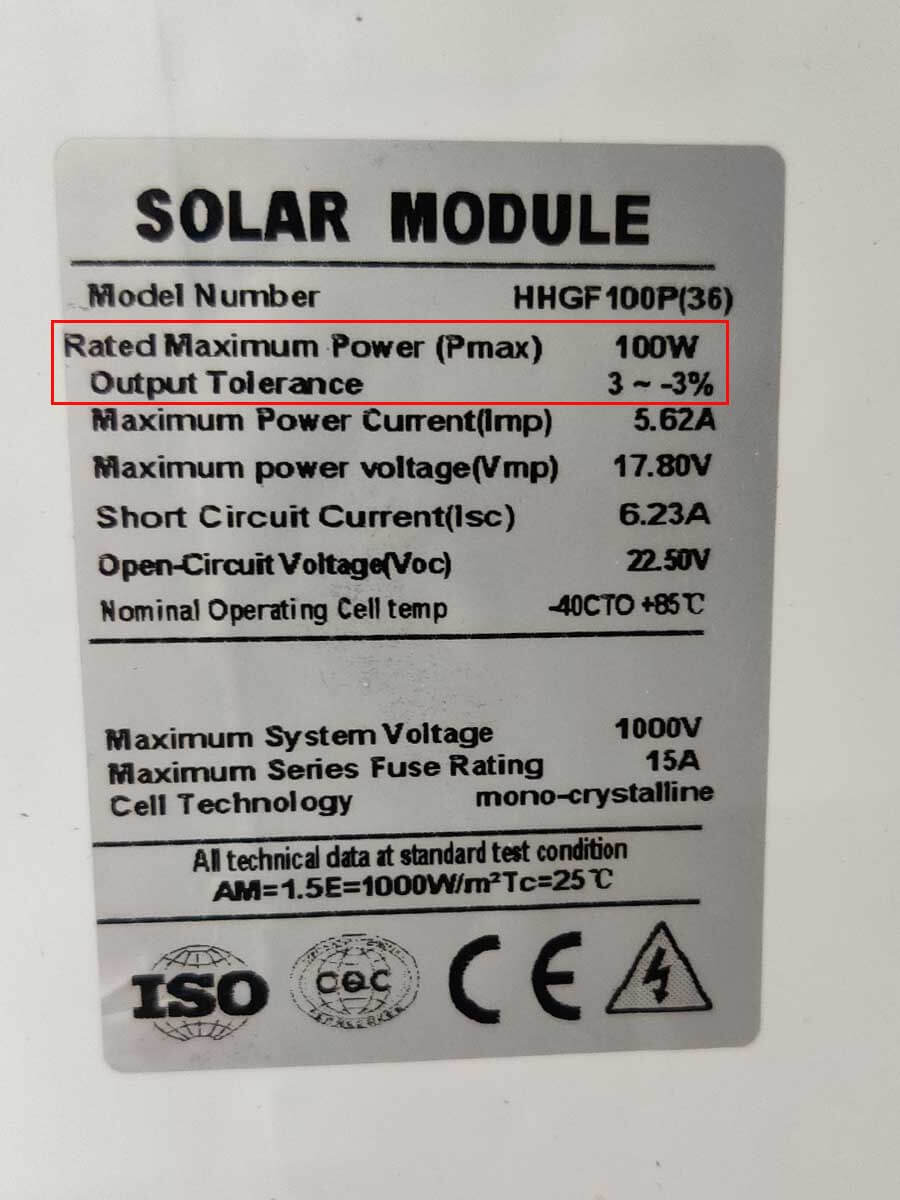
The Wattage rating of a solar panel is the most fundamental rating, representing the maximum power output of the solar panel under ideal conditions. You’ll often see it referred to as “Rated Power”, “Maximum Power”, or “Pmax”, and it’s measured in watts or kilowatts peak (kWp).
For example, the nameplate from my solar panel specifies a Wattage output of 100W, meaning that the solar panel is capable of producing 100 Watts of power under ideal conditions.
Manufacturers also provide an “Output/Power Tolerance” rating, showing how much the actual output can vary from the rated output.
In the example you see above, there’s an “Output Tolerance” rating of -3% to 3%. This means that, under ideal conditions, the 100W solar panel could generate between 97 and 103 Watts of power.
However, since the power output is directly linked to Solar Irradiance (W/m²), which changes with the time of day, weather, and location, the actual power output of a 100-watt solar panel can fluctuate from 0 to 100 watts.
For instance, at night, when Solar Irradiance is 0 Watts/m², the solar panel, regardless of its rated power, will produce 0 Watts.
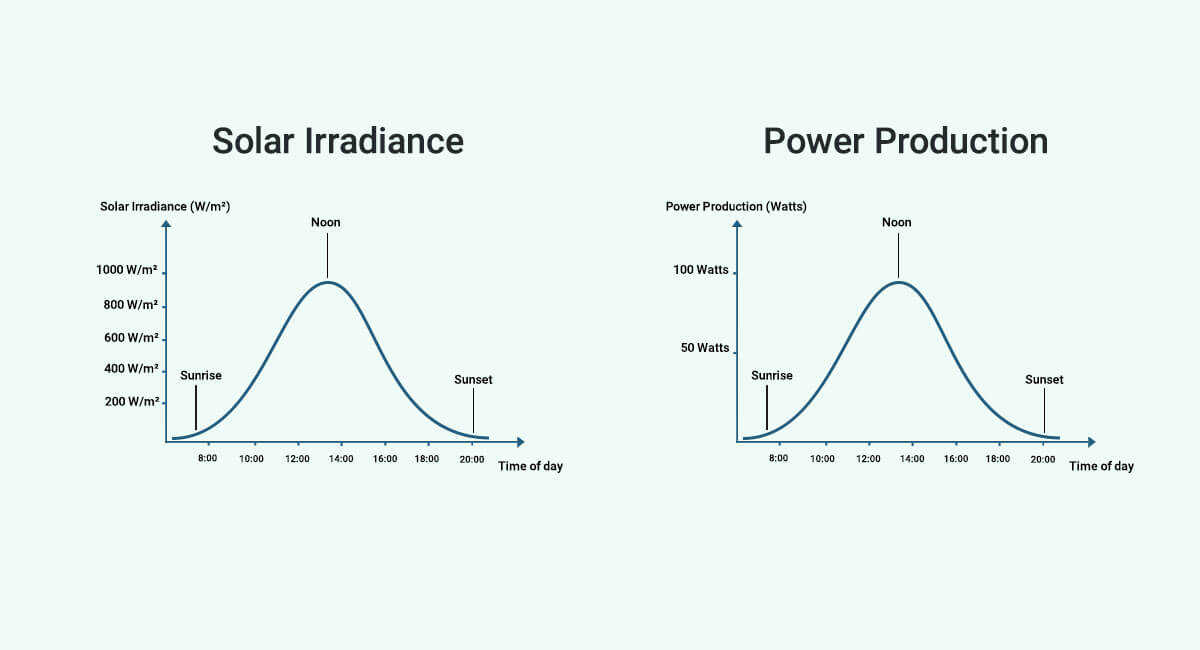
However, in some situations, when the Solar Irradiance surpasses 1000 Watts/m², an occurrence known as “Over-Irradiance,” a 100-watt solar panel might generate more than 100 Watts of power.
Solar panel Current Ratings:
Solar panels come with two Current (or Amperage) ratings that are measured in Amps:
- The Maximum Power Current, or Imp for short.
- And the Short Circuit Current, or Isc for short.
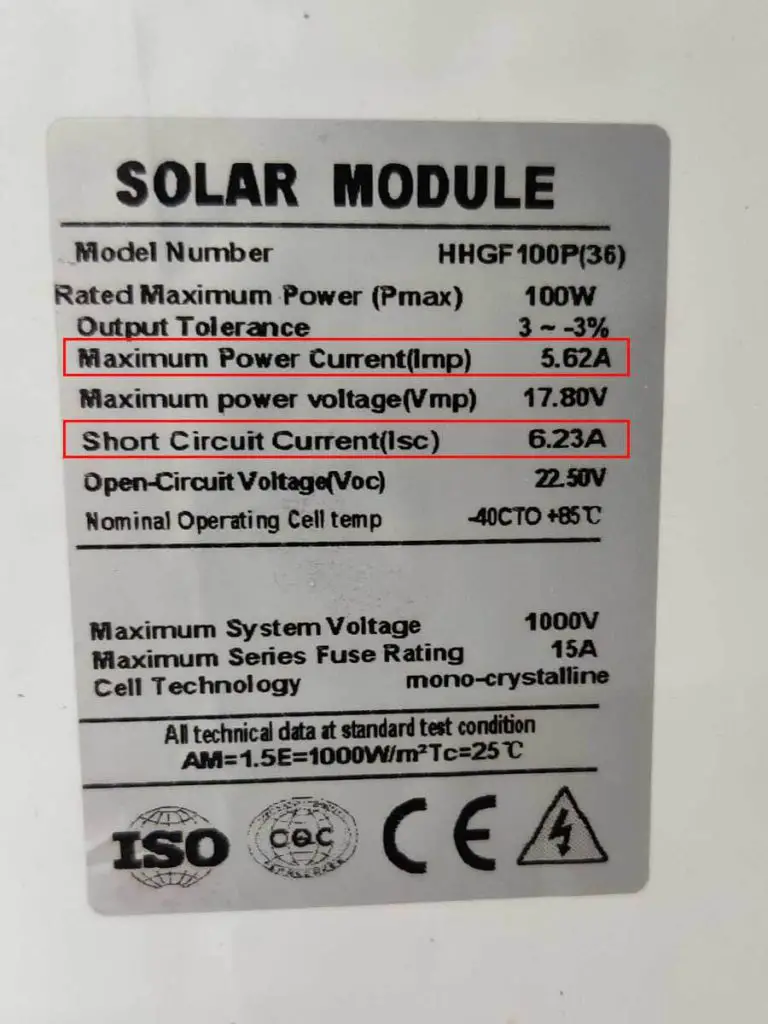
The Maximum Power Current rating (Imp) on a solar panel indicates the amount of current produced by a solar panel when it’s operating at its maximum power output (Pmax) under ideal conditions.
In other words, Imp reflects how much electrical current a panel can provide when exposed to the optimal amount of sunlight and performing at its best.
For instance, the 100-watt solar panel from our example has an Imp rating of 5.62 Amps. This means that when this solar panel is producing 100 Watts of power under Standard Test Conditions, It will be generating 5.62 Amps of current.
On the other hand, the Short Circuit Current rating (Isc) on a solar panel, as the name suggests, indicates the amount of current produced by the solar panel when it’s short-circuited.
The Isc rating represents the maximum amount of current the solar panel could potentially generate under the Standard Testing Conditions.
When designing a solar energy system, the Isc ratings of individual solar panels are used to calculate the maximum current to expect from the solar array, which is the main concern when sizing some system components such as wires, fuses, and solar charge controllers.
Related:
Solar panel Voltage ratings:
Solar panels are classified by their nominal voltages (e.g., 12 Volts or 24 Volts), but these voltages are only used as a reference for designing solar systems. For example, the following solar panel is classified as a 12 Volt panel.
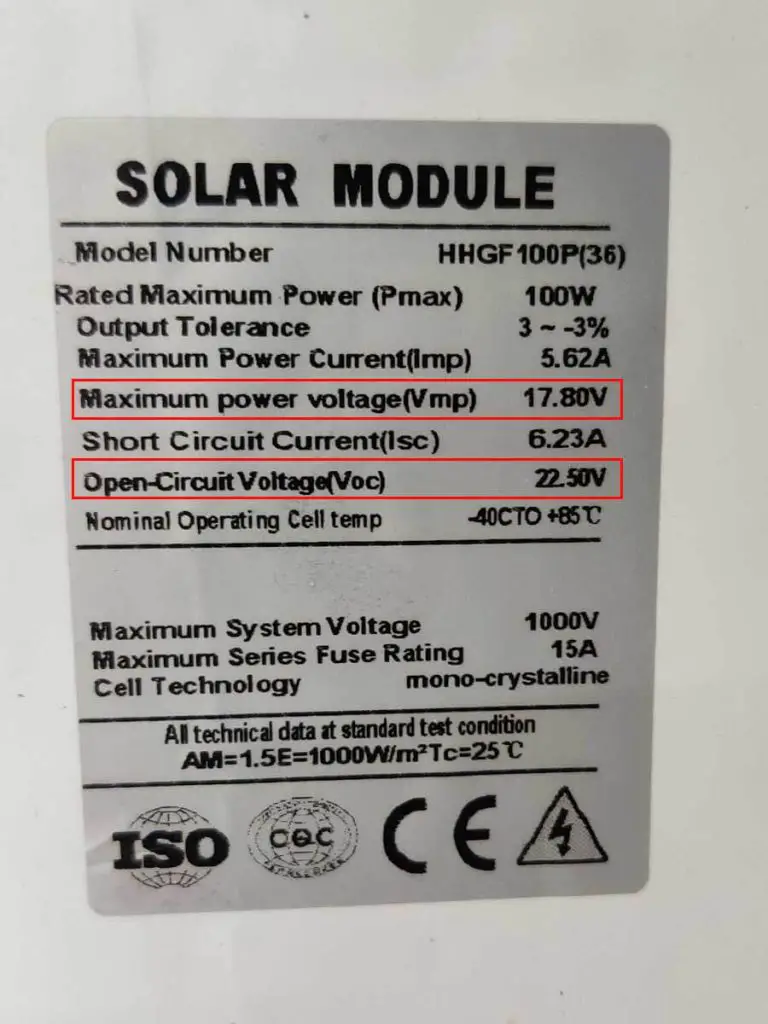
However, The actual operating voltages of a solar panel are determined by the manufacturer and specified through two ratings:
- The Maximum Power Voltage, or Vmp.
- And the Open Circuit Voltage, or Voc.
The Maximum Power Voltage (Vmp) rating of a solar panel indicates the voltage measured across its terminals when it’s operating at its maximum power output (Pmax) under ideal conditions.
In other terms, the Vmp rating represents the most optimal voltage for the panel to produce, resulting in the highest power output under Standard Testing Conditions.
For instance, the 100-watt solar panel from our example has a Vmp rating of 17.8 Volts, which means that under the STCs, this solar panel will measure 17.8 Volts across its terminals when it’s producing 100 Watts of power.
The 100 Watts that this solar panel is capable of producing under standard conditions is, in fact, a product of the solar panel producing its Maximum Power Voltage (Vmp) AND its Maximum Power Current (Imp):
Pmax (Watts) = Vmp (Volts) x Imp (Amps)
Pmax (Watts) = 17.8 Volts x 5.62 Amps
Pmax (Watts) = 100.03 Watts
The Open Circuit Voltage (Voc) rating of a solar panel, on the other hand, indicates the voltage measured across the panel’s terminals under ideal conditions when no load is connected.
For instance, as shown in the image above, my solar panel has a Voc of 22.5 Volts. This means that under Standard Testing Conditions, the panel should measure 22.5 Volts across its terminals when the circuit is open, and no current flows.
However, due to varying actual operating conditions, the open circuit voltage will also vary. For example, when I tested the Voc of the panel in sunlight, my multimeter read 20.63 Volts instead of the expected 22.5 Volts.
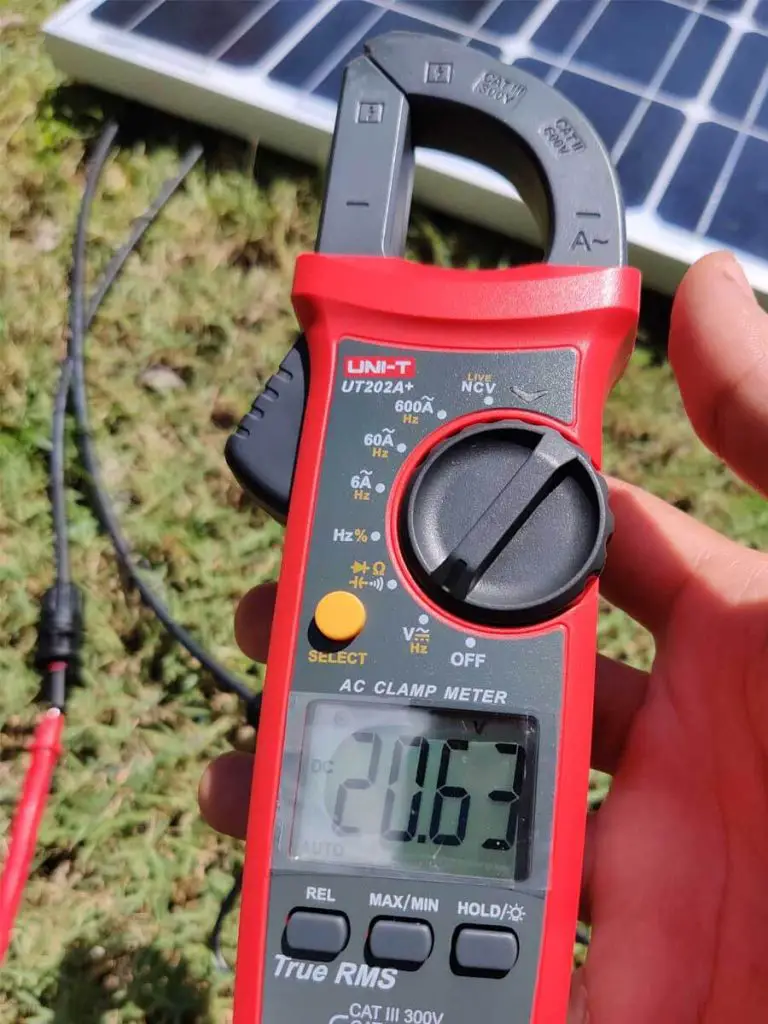
This variance is mainly due to the fact that, during my test, the temperature of the solar cells was higher than the standardized 25°C used in laboratory settings, measuring more like 45°C. Higher cell temperature leads to a lower voltage across the panel.
When designing a solar energy system, the Open Circuit Voltage rating of the solar panels is considered along with temperature correction factors to estimate the maximum Voltage to expect from the solar array.
This ensures that system components, like the solar charge controller or the solar panels themselves, are designed to handle the maximum Voltage safely.
The Operating Cell Temperature Rating:
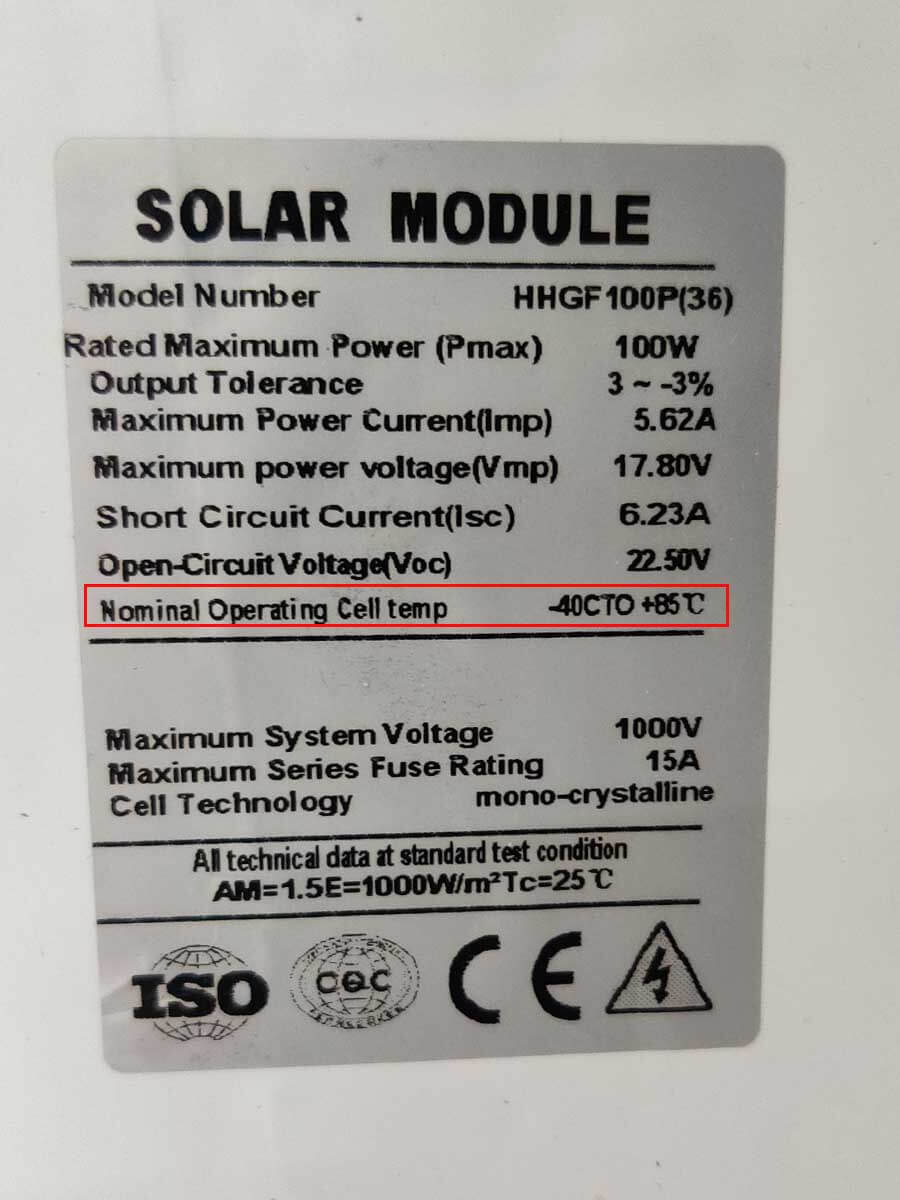
The Operating Cell Temperature range specifies the temperature range within which the cells inside a solar panel can effectively function. This rating is particularly important when dealing with extreme temperatures, both hot and cold.
For instance, in the nameplate above, my 100-watt solar panel has an Operating Cell Temperature range of -40°C to +85°C, which is a standard rating for solar panels.
If the solar cells within the panel are subjected to temperatures colder than -40°C (-40°F) or hotter than +85°C (+185°F) for an extended period, there’s an increased risk of mechanical damage.
While the solar panel itself may not suffer mechanical damage when operating within this temperature range, its efficiency can vary based on cell temperature. This is because, as previously explained, solar panels are rated under specific standardized conditions, one of which is a cell temperature of 25°C (77°F).
In general, if the cell temperature exceeds 25°C, the voltage will drop below the rated value, resulting in reduced power output. Conversely, if the cell temperature falls below 25°C, the voltage will exceed the rated value, leading to an increase in power output.
A Maximum System Voltage rating:
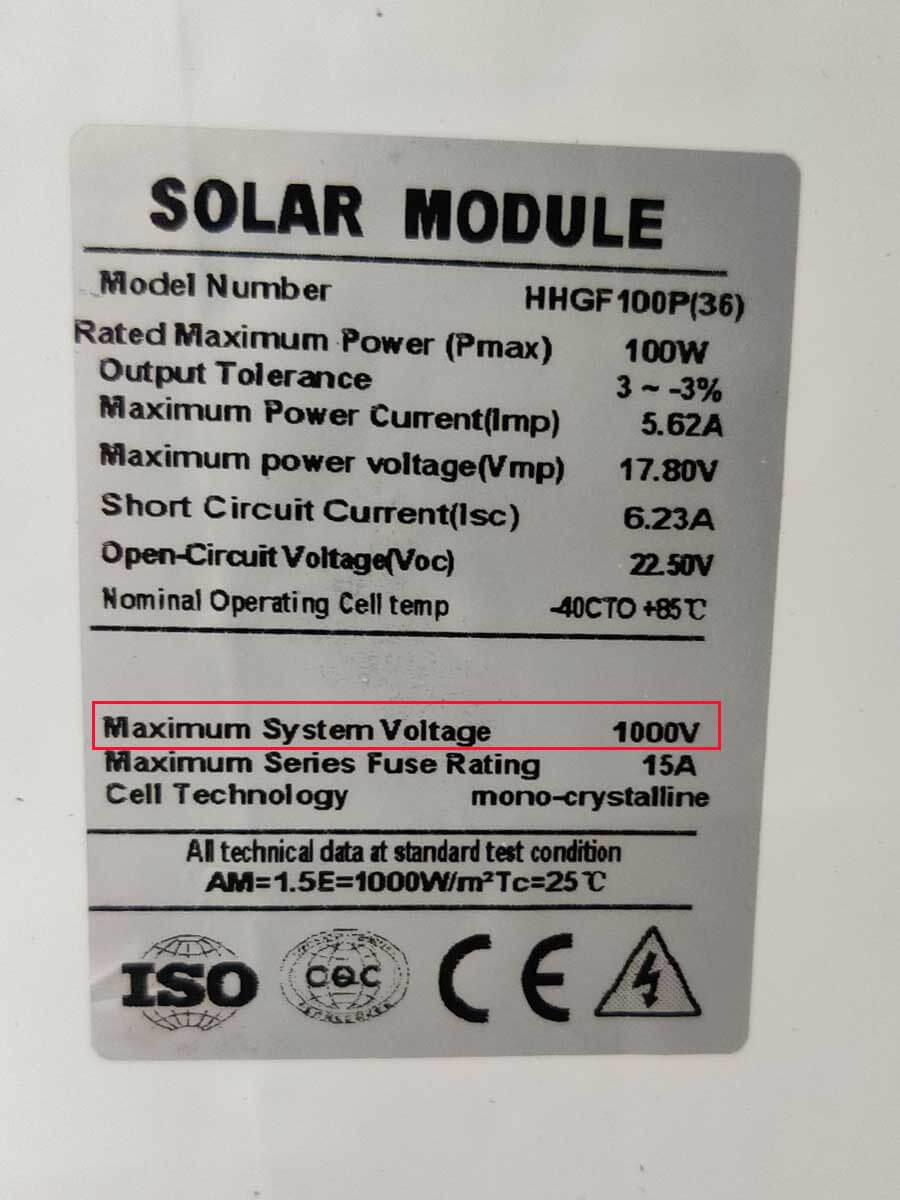
The Maximum System Voltage rating indicates the highest voltage that a solar panel can safely handle when it is part of a larger system. In a PV system, solar panels are interconnected in series or parallel configurations to increase power output and achieve the desired voltage and current levels.
When designing a PV system, the Maximum System Voltage rating is taken into consideration to ensure that the combined voltage of all connected panels does not surpass the panel’s limit.
For example, my solar panel has a Max. System Voltage rating of 1000 Volts, which is the common rating for most solar panels. However, some solar panels may be rated as low as 600 Volts or as high as 1500 Volts.
As mentioned earlier, the open-circuit voltage rating of individual solar panels, combined with temperature correction factors, is used to calculate the maximum voltage expected from the PV system.
This calculated maximum voltage must not exceed the Max. System Voltage rating of the individual solar panels within the system. Going beyond this maximum could result in electrical issues and potential damage to the solar panels.
A Maximum Series Fuse rating:
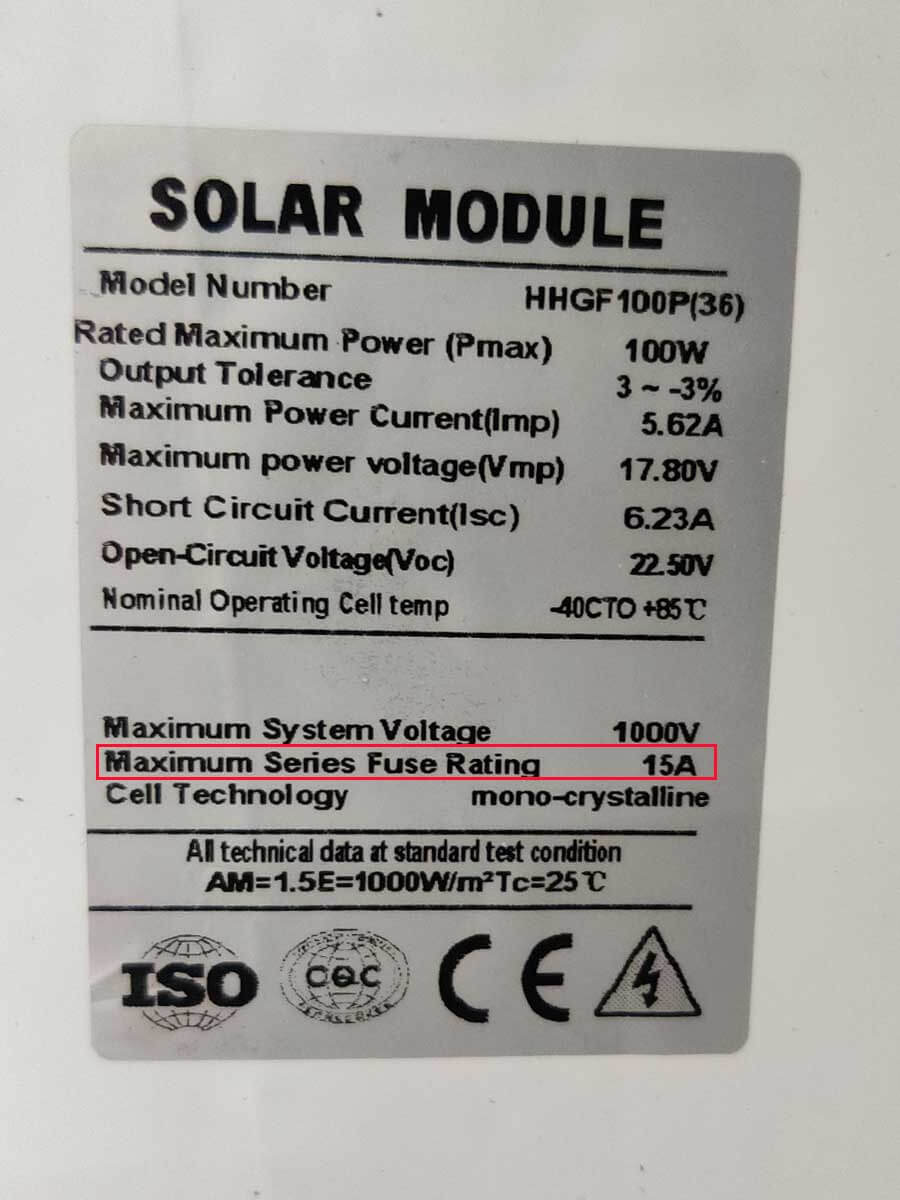
The Maximum Series Fuse rating is another safety rating that specifies the maximum amperage at which the solar panel should be fused. This rating also indicates the maximum current the solar panel is designed to handle, ensuring that the correct fuse is installed to protect the panels from overcurrent.
For example, my solar panel has a Max. Series Fuse rating of 15 Amps. This means that if a fuse is used, whether in a series, parallel, or series-parallel configuration, the Amperage rating of the fuse must not exceed 15 Amps.
Using a larger fuse that allows current to flow through the solar panel in excess of 15 Amps can be detrimental. The fuse won’t break the circuit, and the solar panel may sustain permanent damage.
You can learn more about solar panel fusing here.














Trying to find info re solar regulators when the system is connected to a 12volt battery. Ie how are regulators rated and what size do I need for an 80 watt panel?
Hey there Norm,
You can easily find an appropriate charge controller using this MPPT Charge Controller Calculator. If you’d like a cheaper option you can use a PWM controller, and use this PWM Calculator to size it.
Hope this helps.
For days, I have been scouring the internet trying to wrap my head around all the different solar panel rating numbers, and growing more confused. I’m grateful that I happened onto your website. You explained exactly what I needed to know with great clarity, and in a concise manner. Thank you so much!
You’re welcome! Glad I could be of service.